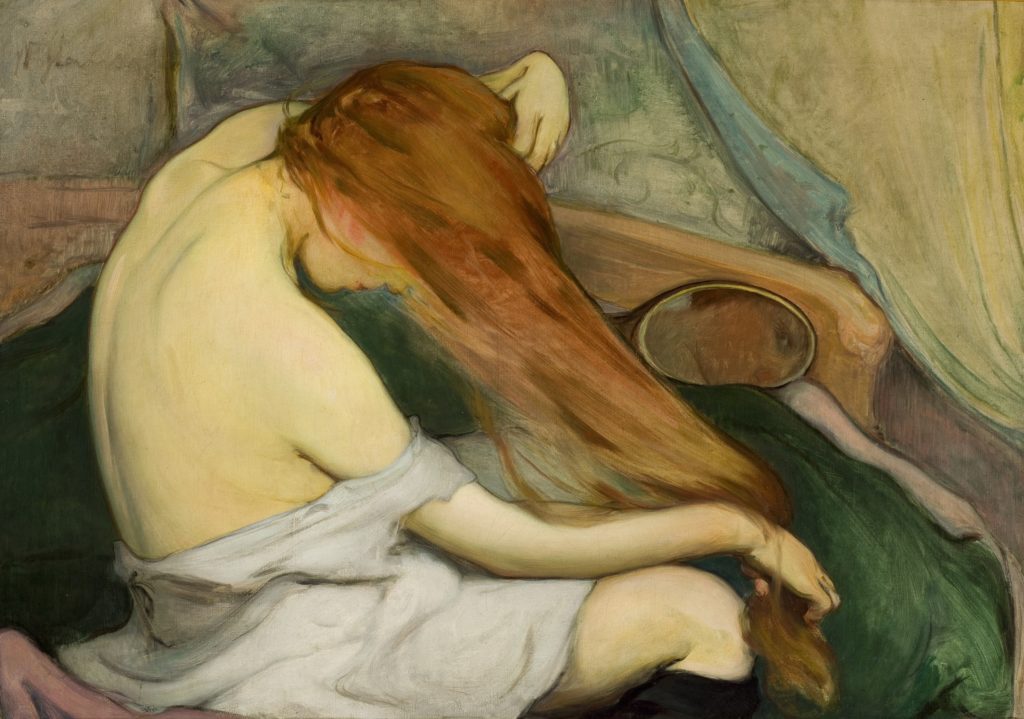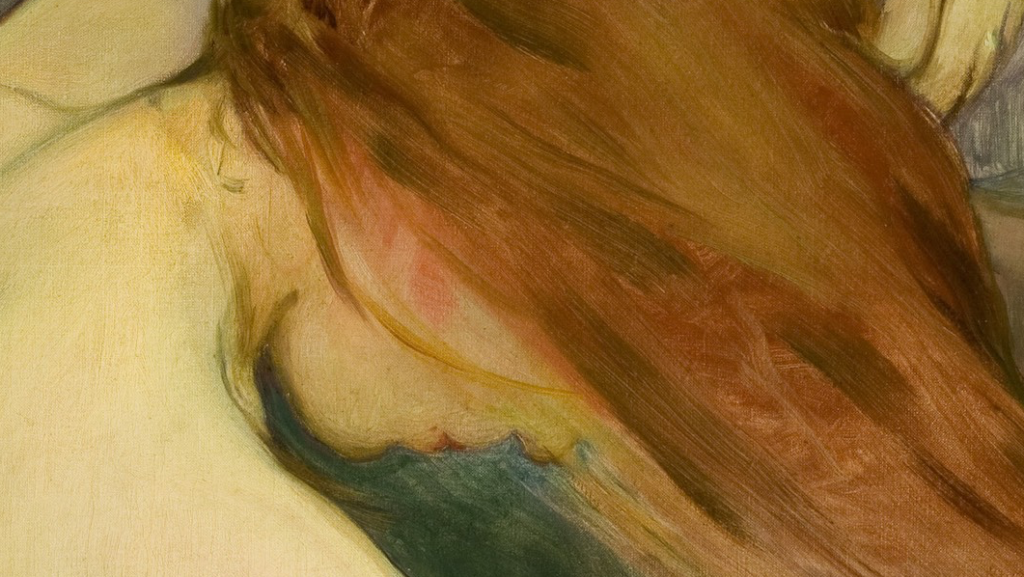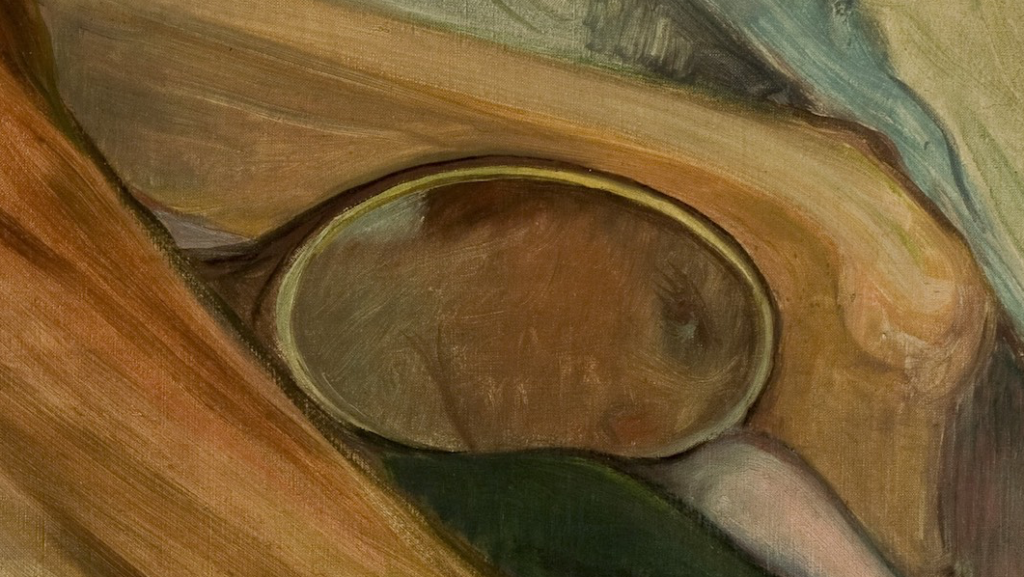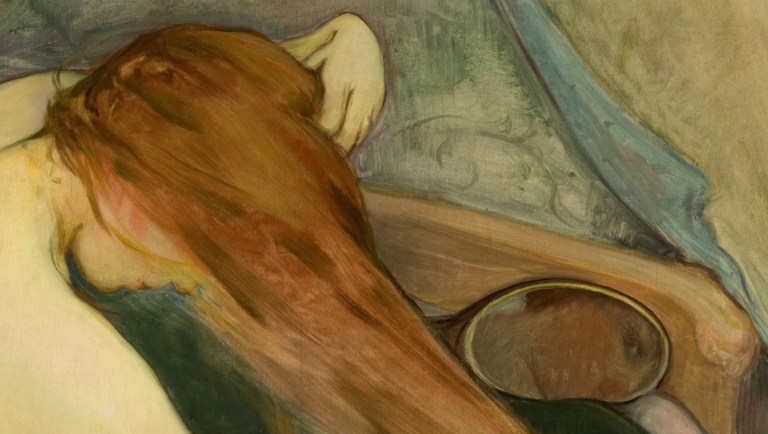Władysław Ślewiński was a leading artist of the Young Poland movement and one of the first Polish artists who went to Paris. It was unusual since most of the Polish artists back then rater went to Munich. But it was a good move as he became one of Gauguin’s students and developed his own art language drawing from French art of the last decades of the 19th century – the synthesis of Paul Gauguin and the circle of Pont Aven group.

But today’s painting is less Gauguinesque – it reminds me of Degas‘ classic works, which were created ca. 20 years before. In Ślewiński’s artistic oeuvre a woman combing her hair is rather unique. It is intriguing and disturbing, it combines Art Nouveau form with Young Poland’s sensuality. In this intimate scene, the artist showed a half-naked model sitting on a bed, her side to the viewer and a cascade of hair of intense copper color falling over her face.

We do not know who the portrayed woman was. Maybe it was the artist’s wife – Russian painter Eugenia Shevtsov, whom he had met in Paris and whose portraits make a great part of Ślewiński’s work.

With time Ślewiński’s art changed: he simplified forms and painted them very flat. He encircled areas of color with contours, though he sometimes blended color with color. While he sometimes ventured on the verge of abstraction, his style never departed completely from direct observation of nature.
Find out more:
[easyazon_image align=”none” height=”82″ identifier=”B001U6MWSG” locale=”US” src=”https://www.dailyartmagazine.com/wp-content/uploads/2018/11/41Mu4RGqqdL.SL110.jpg” tag=”dailyartdaily-20″ width=”110″] [easyazon_image align=”none” height=”110″ identifier=”8392263537″ locale=”US” src=”https://www.dailyartmagazine.com/wp-content/uploads/2018/11/51lSnSLM5NL.SL110.jpg” tag=”dailyartdaily-20″ width=”80″] [easyazon_image align=”none” height=”110″ identifier=”0895581043″ locale=”US” src=”https://www.dailyartmagazine.com/wp-content/uploads/2018/11/512VXxGYcwL.SL110.jpg” tag=”dailyartdaily-20″ width=”82″]






